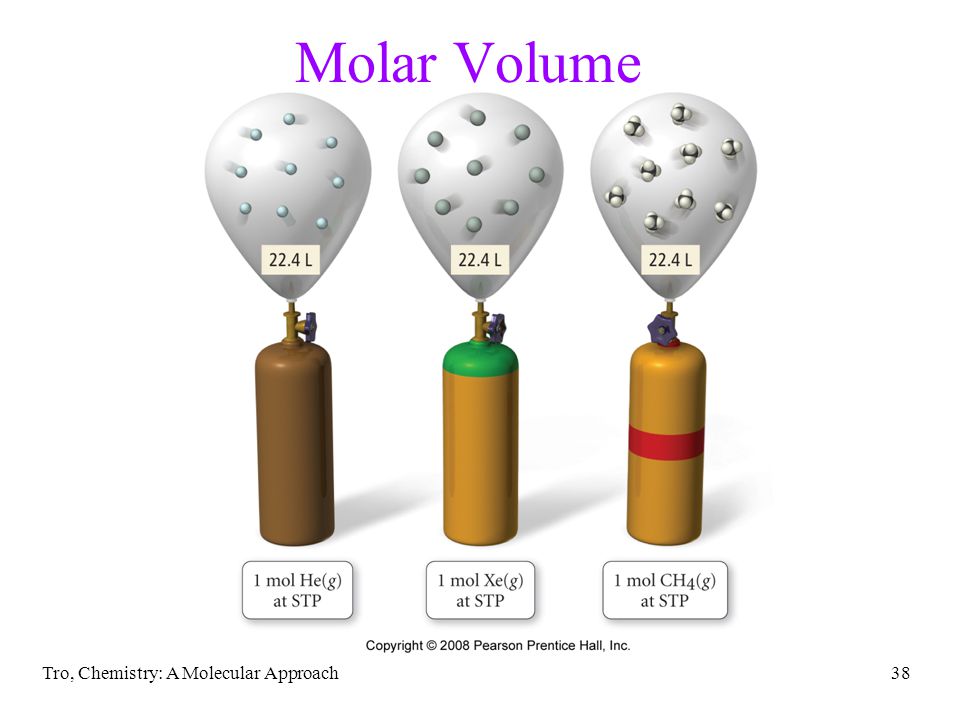Question #624ba
1 Answer
Explanation:
The idea here is that one mole of any ideal gas that is kept under Standard Temperature and Pressure, STP, conditions will occupy
This can be derived using the ideal gas law equation
#color(blue)(|bar(ul(color(white)(a/a)PV = nRTcolor(white)(a/a)|)))" "# , where
STP conditions are defined as a pressure of
#PV = nRT implies V/n = (RT)/P#
#V/n = (0.0821(color(red)(cancel(color(black)("atm"))) * "L")/("mol" * color(red)(cancel(color(black)("K")))) * 273.15color(red)(cancel(color(black)("K"))))/(1color(red)(cancel(color(black)("atm")))) = "22.4 L mol"^(-1)#
This tells you that every mole of an idea lgas that is being kept under STP conditions will occupy
 http://slideplayer.com/slide/1716615/
http://slideplayer.com/slide/1716615/
So, if
#67.2color(red)(cancel(color(black)("L"))) * overbrace("1 mole"/(22.4color(red)(cancel(color(black)("L")))))^(color(purple)("molar volume of a gas at STP")) = color(green)(|bar(ul(color(white)(a/a)"3.00 moles"color(white)(a/a)|)))#
SIDE NOTE It's worth noting that the current STP conditions are defined as a pressure of
Under these conditions for pressure and temperature, one mole of any ideal gas occupies

